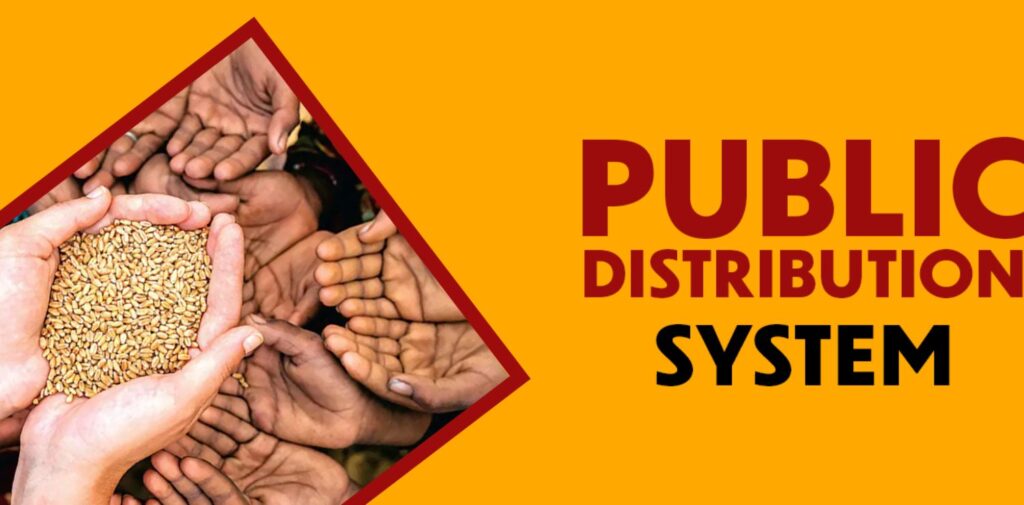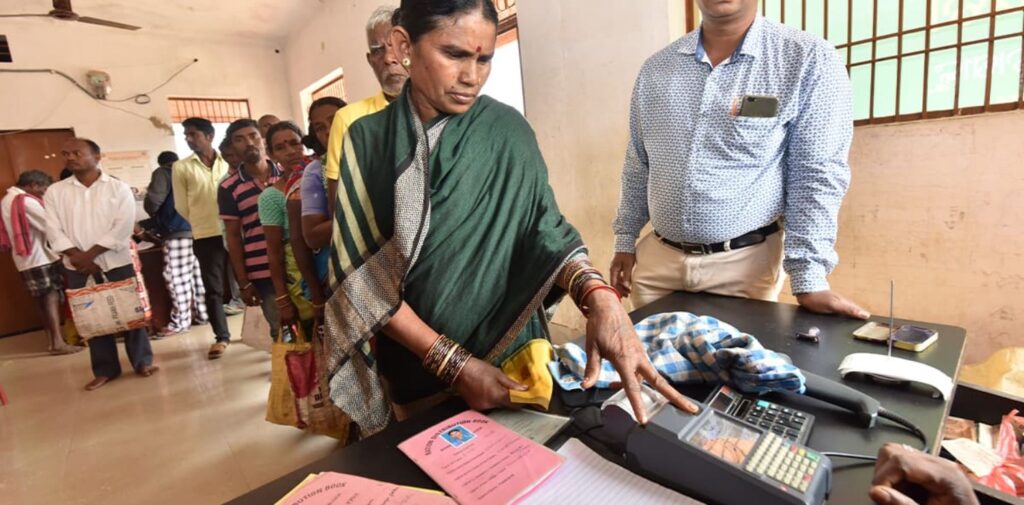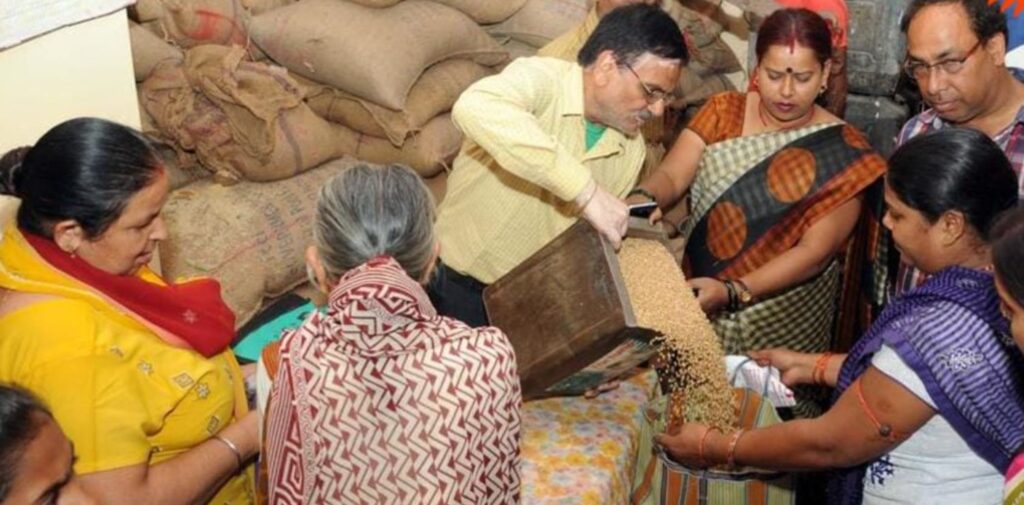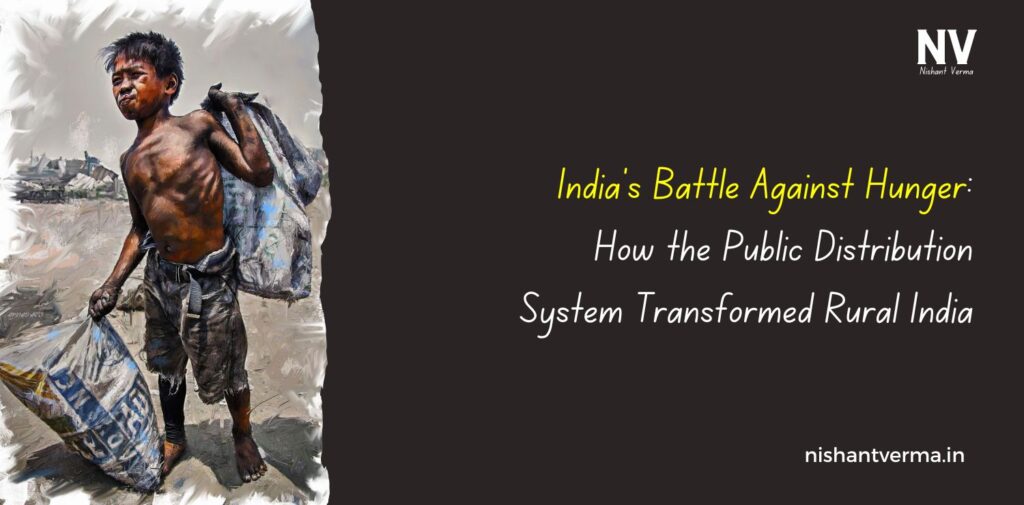India, a country of over 1.4 billion people, has long faced the challenge of hunger and malnutrition. Despite its rapid economic growth, millions of people still struggle to get enough to eat. However, over the past several decades, India has made significant strides in addressing food insecurity, particularly in its rural areas. One of the most important tools in this battle has been the Public Distribution System (PDS). This system has played a pivotal role in transforming the way food is distributed, ensuring that even the most vulnerable populations in rural India have access to essential food grains.
What is the Public Distribution System (PDS)?
The Public Distribution System is a government-run initiative that aims to provide subsidized food grains and essential commodities to the economically weaker sections of society. The system was introduced in India in the 1940s, but it took shape and expanded in the decades after independence. Today, it serves as one of the largest food security networks in the world.
The PDS works by buying food grains, such as rice, wheat, and sugar, from farmers at a minimum support price (MSP). These grains are then distributed through a network of Fair Price Shops (FPS) that are spread across the country. People from economically disadvantaged backgrounds can purchase these grains at much lower prices than the market rate. The system is intended to ensure that even those living in remote and rural areas have access to food at affordable prices.

The Origins of PDS and Its Evolution
In the early years of independence, India faced severe food shortages. The country’s agriculture was underdeveloped, and the population was rapidly growing. During this time, hunger and food insecurity were widespread. The government realized that it needed a systematic approach to manage food supply and ensure that no one went hungry.
Initially, the Public Distribution System was set up as a response to food scarcity in urban areas, particularly during the 1940s when World War II disrupted global supply chains. However, the system gradually expanded to rural areas. Over the years, it underwent various reforms and changes to meet the growing population’s needs. In the 1970s, for instance, the government introduced the Targeted Public Distribution System (TPDS), which aimed to focus subsidies on the poorest sections of society.
In the 1990s, the government undertook more reforms to make the PDS more efficient, such as computerizing ration cards and introducing measures to reduce leakage and corruption. In recent years, India has implemented several changes to improve the PDS, especially with the introduction of direct benefit transfers (DBT) to ensure that food subsidies reach the right people without intermediaries.

How PDS Transformed Rural India
- Improved Access to Food: The most immediate and visible benefit of the PDS has been the increased access to food for rural communities. In many remote villages, food scarcity was a persistent problem. Farmers, who produced food, often couldn’t afford to buy it themselves during lean seasons. With the introduction of subsidized food grains through the PDS, many people were able to secure a basic level of food security. Families that previously depended on irregular or seasonal work for food could now access essential grains at regular intervals. This access to food helped stabilize their diets, particularly in terms of staple foods like rice and wheat.
- Reduction in Hunger and Malnutrition: Chronic hunger and malnutrition have been major issues in India, particularly among children and women. By providing food at lower prices, the PDS has contributed to reducing hunger. Children from poorer families who were often malnourished due to lack of proper nutrition have benefited from the availability of staple foods. The introduction of fortified grains in recent years has also helped in improving nutrition levels in rural areas. While there is still a lot to be done to combat malnutrition, especially in terms of providing a more varied diet that includes fruits, vegetables, and protein sources, the PDS has been a significant step in improving food security in rural areas.
- Stabilizing Local Agriculture: The PDS also played a key role in stabilizing local agriculture. Farmers often struggled to get fair prices for their crops, especially during times of surplus when the market price dropped. By buying food grains at a minimum support price (MSP), the government ensured that farmers were able to sell their produce at a fair price, which helped to stabilize incomes in rural areas. Moreover, the PDS created a market for agricultural goods in rural areas, which benefited farmers in terms of demand for their crops. This encouraged agricultural production and contributed to rural economic growth.
- Increased Employment Opportunities: The Public Distribution System also helped create job opportunities, especially in rural India. Fair Price Shops, which are often run by local entrepreneurs, created employment for people in villages. The entire supply chain of the PDS, from the transportation of food grains to distribution and management of Fair Price Shops, created various forms of employment, particularly for low-income individuals in rural areas. Additionally, the infrastructure needed to support the PDS, such as storage facilities and transportation networks, created more jobs and economic opportunities for rural communities. This also contributed to the overall development of rural areas.
- Social Safety Net for the Vulnerable: In rural India, a large portion of the population lives below the poverty line. The Public Distribution System has served as a critical social safety net, particularly for vulnerable groups such as widows, elderly people, and people with disabilities. These groups often lack regular income sources and are highly dependent on food subsidies. The PDS has helped ensure that these individuals have access to the necessities of life, reducing their vulnerability to hunger and malnutrition.
- Empowerment of Women: In many rural households, women are primarily responsible for managing the household and ensuring that the family has enough food. The PDS has been crucial in empowering women, especially in poorer households. By providing them with access to subsidized food, women no longer had to depend on irregular market conditions to feed their families. This has also helped reduce gender disparities in food access and security.
- Reducing Rural-to-Urban Migration: One of the outcomes of improved food security through the PDS is the reduction in rural-to-urban migration. Many people from rural areas migrate to cities in search of better job opportunities, often because they are unable to secure enough food or income in their villages. By improving food security and creating more stable rural economies, the PDS has helped reduce the pressure on urban areas by encouraging people to stay in their villages.

Challenges and Reforms in the PDS
While the PDS has made significant strides in combating hunger, it has also faced criticism and challenges. One of the major issues is leakage and corruption within the system. In many cases, food meant for the poor has been diverted to the black market or sold at higher prices than intended. To address this, the government has introduced reforms like digitization of ration cards, biometric verification, and direct cash transfers to make the system more efficient and transparent.
Another challenge is the narrow focus of the PDS on staple grains. While the system ensures access to rice, wheat, and sugar, it does not always provide a well-rounded diet that includes vegetables, fruits, and protein sources. Recent reforms have begun to address this by incorporating fortified grains and exploring ways to improve the variety of food available to beneficiaries.
Conclusion:
The Public Distribution System has played a transformative role in reducing hunger and malnutrition in rural India. By providing access to affordable food grains, it has helped improve food security, stabilize local agriculture, and create economic opportunities in rural areas. Despite challenges, the PDS remains one of India’s most important tools in its ongoing battle against hunger.




